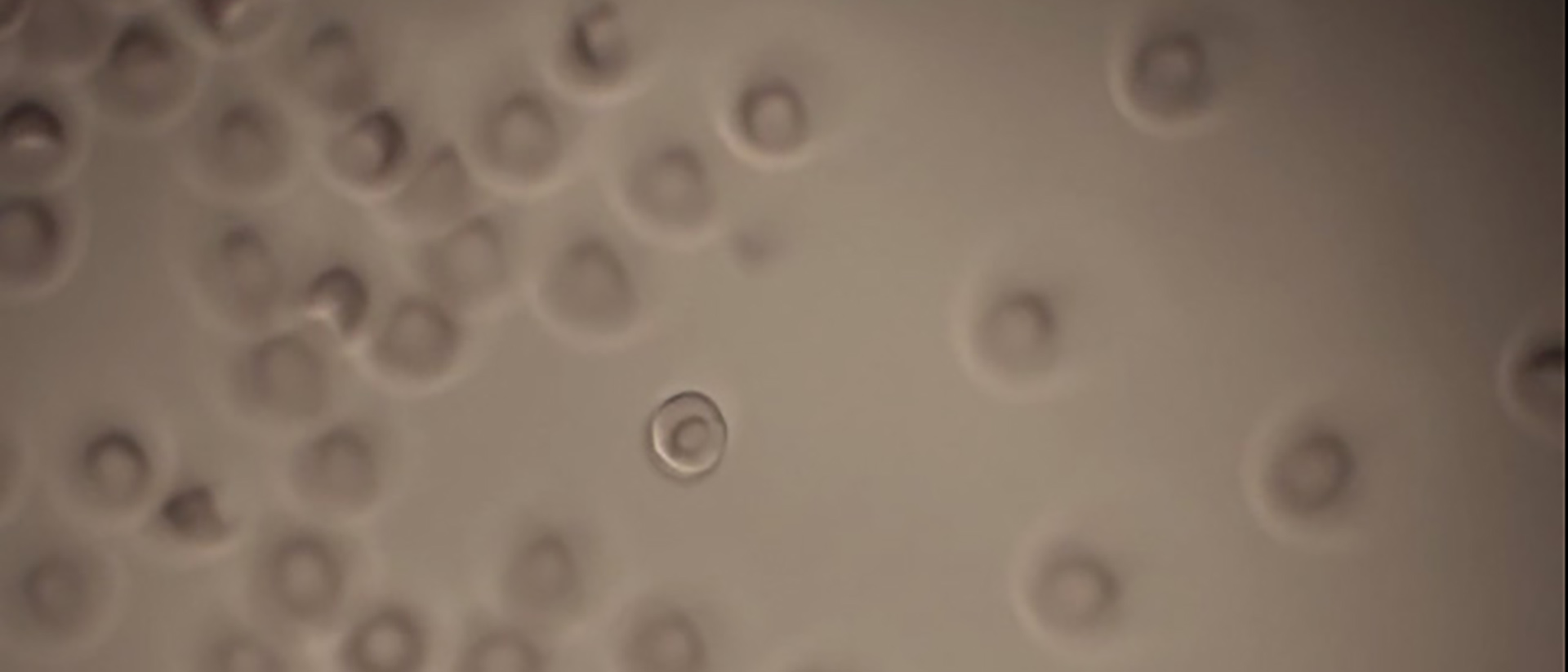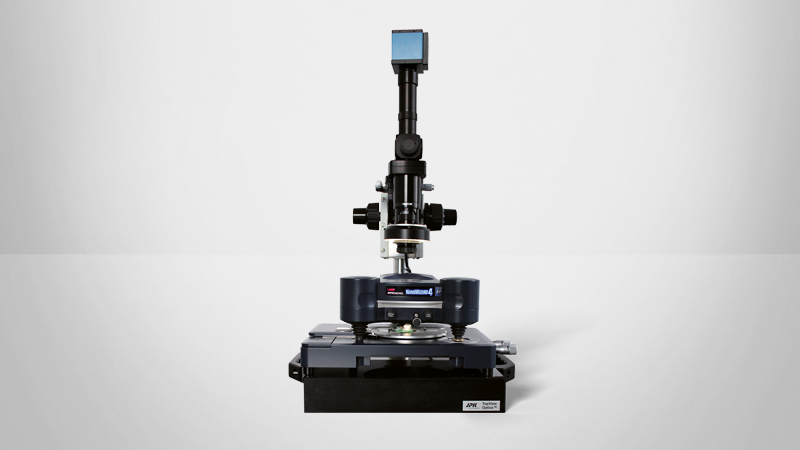

Nanomanipulation & Nanolithography
Lithography
Electrical Oxidation on Silicon Substrate
JPK NanoWizard 4 XP NanoScience AFM image of electrical oxidation on a plain silicon substrate. A Si cantilever with overall Pt/Ir coating was used. Voltage ramps: 0-10-0 V; Ramp speed: 3 V/s; Writing speed: 250 nm/s; Circle radius: 5 µm.
Nanomanipulation
Polymer Nanoparticle Manipulation
Manipulation of 25 nm polymer nanoparticles, imaged with the NanoWizard 4 XP NanoScience AFM. Scan region: 1 µm * 1 µm; Z-range 30 nm.
Optical Trapping
Red Blood Cell Transportation
In this JPK NanoTracker 2 video, the transport of a red blood cell using eight time-shared traps is demonstrated.
First, the cell is captured with eight traps. In the next step, it is moved in z-direction above the other cells and afterward moved within the petri dish. As the last step, the cell is placed back on the bottom of the petri dish.
JPK Multiplexing
This video shows how many optical traps can be generated from a single laser source by rapidly scanning the laser across many positions, a process called multiplexing. This multiplexing is in a way similar to juggling: not all objects are manipulated at the same time, but intermittently grabbing hold of each one of them still allows to control them all.
The NanoTracker 2 optical tweezers platform has such multiplexing functionality integrated into the software, allowing for versatile manipulation of many objects.
Using the Multichannel LaminarFlowCell
This video shows the use of the Multichannel LaminarFlowCell - LFC™ in conjunction with the NanoTracker optical tweezers platform. Five non-mixing laminar flow channels are scanned through using a motorized precision stage, after which a particle is trapped from one channel and swept into an adjacent one using an optical trap.
